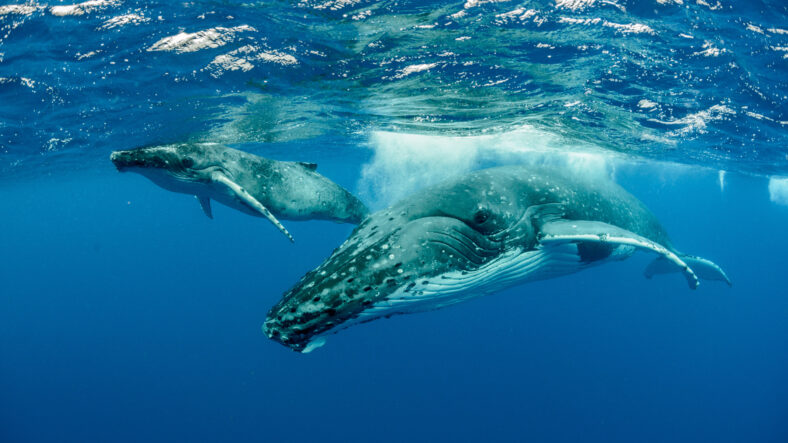Humpback Whale Songs Are Similar To Human Language

For a long time, language has been viewed as a uniquely human trait, with features that set us apart from how other species communicate.
However, a new study has revealed that humpback whale song actually shares the same statistical pattern of human language.
There is an empirical rule called Zipf’s law that all human languages follow. It states that the most common word is used about twice as often as the second most common, three times as often as the third, and so on.
A team of researchers has suggested that this rule may have developed to make communication easier to learn.
“It strengthens the view that we should be thinking about human language not as a completely different phenomenon from other communication systems but instead think about what it shares with them,” said Inbal Arnon, a co-author of the study and a psychologist at the Hebrew University of Jerusalem.
The pattern is in humpback whale song as well, although it did not immediately stand out to researchers. The research team had to identify the units within the song that would be equivalent to human words. They used the way that human babies learn language to achieve this.
“Speech is continuous, and there are no pauses between words, so infants have to discover word boundaries,” Arnon said.
“To do this, they use low-level statistical information: Specifically, sounds are more likely to occur together if they are part of the same word. Infants use these dips in the probability that one sound follows another to discover word boundaries.”
The researchers analyzed segments in whale song spanning eight years of data from New Caledonia in the South Pacific.

Sign up for Chip Chick’s newsletter and get stories like this delivered to your inbox.
They examined the frequency of sounds and sequences, including syllables described as grunts, squeaks, and moans. In the end, they realized that humpback whale songs also follow Zipf’s law.
It is believed that these two different species, humans and humpback whales, both developed communication that follows Zipf’s law because it makes communication easier to pass on to future generations.
Two other shared features between human language and the vocal communication of humpback whales were found.
One of them is Menzerath’s law, which says that longer sequences tend to have smaller components than shorter sequences. The other is the brevity law, which declares that more common words are shorter.
Overall, the new work challenges previous beliefs about how language is exclusive to humans and has uncovered parallels between unrelated species.
“It suggests that our understanding of the evolution of language can benefit not only from looking at our closest primate relatives but also at cases of convergent evolution elsewhere in nature,” said Simon Kirby, a professor from the University of Edinburgh.
“Looking beyond the way language is used to express meaning, we should consider how language is learned and transmitted culturally over multiple generations.”
The study was published in Science.
More About:Animals





